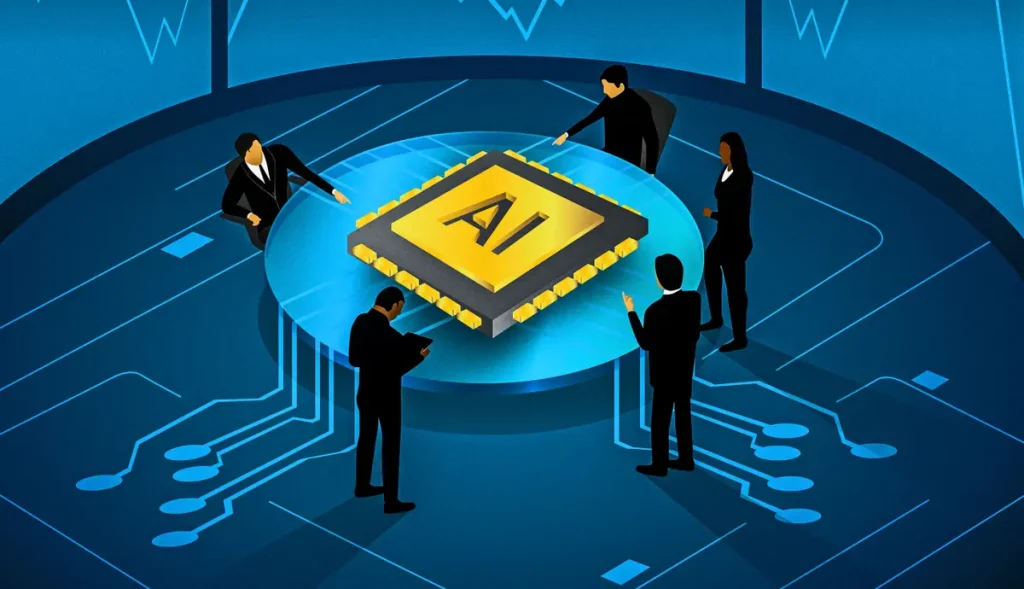The banking sector is undergoing a significant transformation with the integration of AI-powered digital workers. These intelligent agents are automating various tasks, enhancing efficiency, and reshaping the workforce landscape.
So What Are AI-Powered Digital Workers?
AI-powered digital workers are autonomous software agents designed to perform specific tasks traditionally handled by human employees. Unlike generic chatbots, these agents operate with dedicated system logins, access enterprise tools, and are managed by human supervisors. Their roles range from coding and payment instruction validation to customer service and fraud detection.
BNY Mellon Leading the Charge
The Bank of New York Mellon (BNY Mellon) has pioneered the deployment of AI digital workers. The bank has integrated dozens of these digital employees into its operations, assigning them individual company logins and enabling them to operate alongside human staff. These AI workers handle specialized tasks such as code vulnerability fixes and payment instruction validation.
BNY Mellon’s Chief Information Officer, Leigh-Ann Russell, emphasized that while it’s early days, the integration of digital workers is expected to rise significantly within six months. The digital employees are designed with limited scope and access to maintain data security.
JPMorgan Chase’s AI Initiatives
JPMorgan Chase is also exploring the potential of AI in banking. The bank is experimenting with personalized AI agents for employees and customers. JPMorgan plans to provide AI assistants for every employee and client experience, already offering AI chatbot access to its 230,000 staff. The broader financial industry is actively grappling with how to effectively integrate and manage AI within traditional workforce and operational models.
Benefits of AI Digital Workers
1. Enhanced Efficiency
AI digital workers can perform tasks faster and more accurately than humans, leading to increased operational efficiency. For instance, Goldman Sachs’ CEO David Solomon revealed that AI can complete 95% of an IPO prospectus in minutes, reducing the need for large teams.
2. Cost Reduction
By automating routine tasks, banks can reduce operational costs. HSBC, for example, is exploring the use of AI agents to automate back-office roles within its corporate and institutional banking division, aiming to improve efficiency and profitability.
3. Improved Customer Service
AI chatbots and virtual assistants can automate up to 50% of customer inquiries, allowing human agents to focus on complex issues. This leads to faster response times and improved customer satisfaction.
Challenges AI-Powered Digital Workers Needs To Overcome
Despite the benefits, the integration of AI digital workers presents challenges. Banks must ensure that these AI agents operate within defined roles to maintain data security. Additionally, there is a need for clear management structures to oversee AI operations. The broader financial industry is actively grappling with how to effectively integrate and manage AI within traditional workforce and operational models.
The Future of AI Banking Is Now
The adoption of AI-powered digital workers is expected to continue growing in the banking sector. As technology advances, these digital employees will take on more complex tasks, further enhancing efficiency and transforming the workforce landscape.
The rise of digital employees in banking—AI-enabled workers with real system access—is reshaping back-office operations, enhancing productivity, and redefining human-AI collaboration. With banks like BNY Mellon and JPMorgan leading the frontline, AI agents swiftly handle precise, rule-based work, freeing human teams for strategic challenges.
This transformation is more than a chatbot upgrade—it’s a workforce evolution, demanding thoughtful integration strategies in security, governance, and training. As AI becomes a standard member of banking teams, institutions poised to merge human and digital effort stand to lead in an increasingly automated financial landscape. It is crucial for banks to balance automation with human oversight to ensure ethical and effective AI integration.


